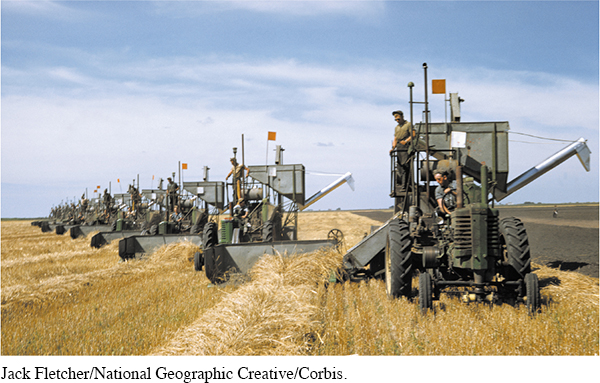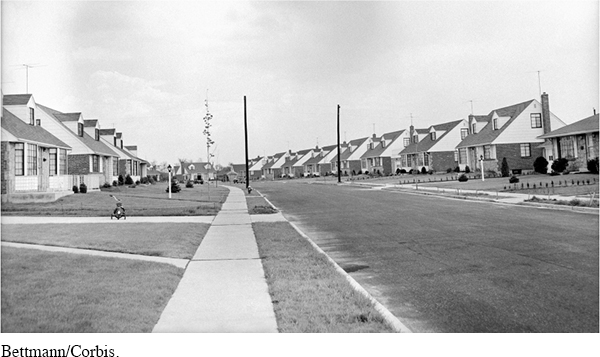The American Promise: Printed Page 783
The American Promise, Value Edition: Printed Page 711
The American Promise: A Concise History: Printed Page 810
Technology Transforms Agriculture and Industry
Between 1940 and 1960, agricultural output mushroomed even while the number of farmworkers declined by almost one-
The decline of family farms and the growth of large commercial farming, or agribusiness, were both causes and consequences of mechanization. Benefiting handsomely from federal price supports begun in the New Deal, larger farmers could afford technological improvements, while smaller producers lacked capital to purchase the machinery necessary to compete. Consequently, average farm size more than doubled between 1940 and 1964, and the number of farms fell by more than 40 percent.
Many small farmers who hung on constituted a core of rural poverty. Southern landowners replaced sharecroppers and tenants with machines. Hundreds of thousands of African Americans moved to cities, where racial discrimination and a lack of jobs mired many in urban poverty. A Mississippi mother reported that most of her relatives headed for Chicago when they realized that “it was going to be machines now that harvest the crops.” Worrying that “it might be worse up there” for her children, she agonized, “I’m afraid to leave and I’m afraid to stay.”

New technologies also transformed industrial production. Between 1945 and 1960 the number of labor-
The strength of labor unions contributed to prosperity by putting money into the hands of people who would spend it. Real earnings for production workers shot up 40 percent. A steelworker’s son remembered, “In 1946, we did not have a car, a television set, or a refrigerator. By 1952 we had all those things.” In most industrial nations, government programs underwrote their citizens’ security, but the United States developed a mixed system in which company-
The American Promise: Printed Page 783
The American Promise, Value Edition: Printed Page 711
The American Promise: A Concise History: Printed Page 810
Page 785While the number of organized workers continued to grow, union membership peaked at 27.4 percent of all workers in 1957. Technological advances eliminated jobs in heavy industry. “You are going to have trouble collecting union dues from all of these machines,” commented a Ford manager to union leader Walter Reuther. Moreover, the economy as a whole was shifting from production to service. Beginning in 1957, white-

The growing clerical and service occupations swelled the demand for female workers, who held nearly one-